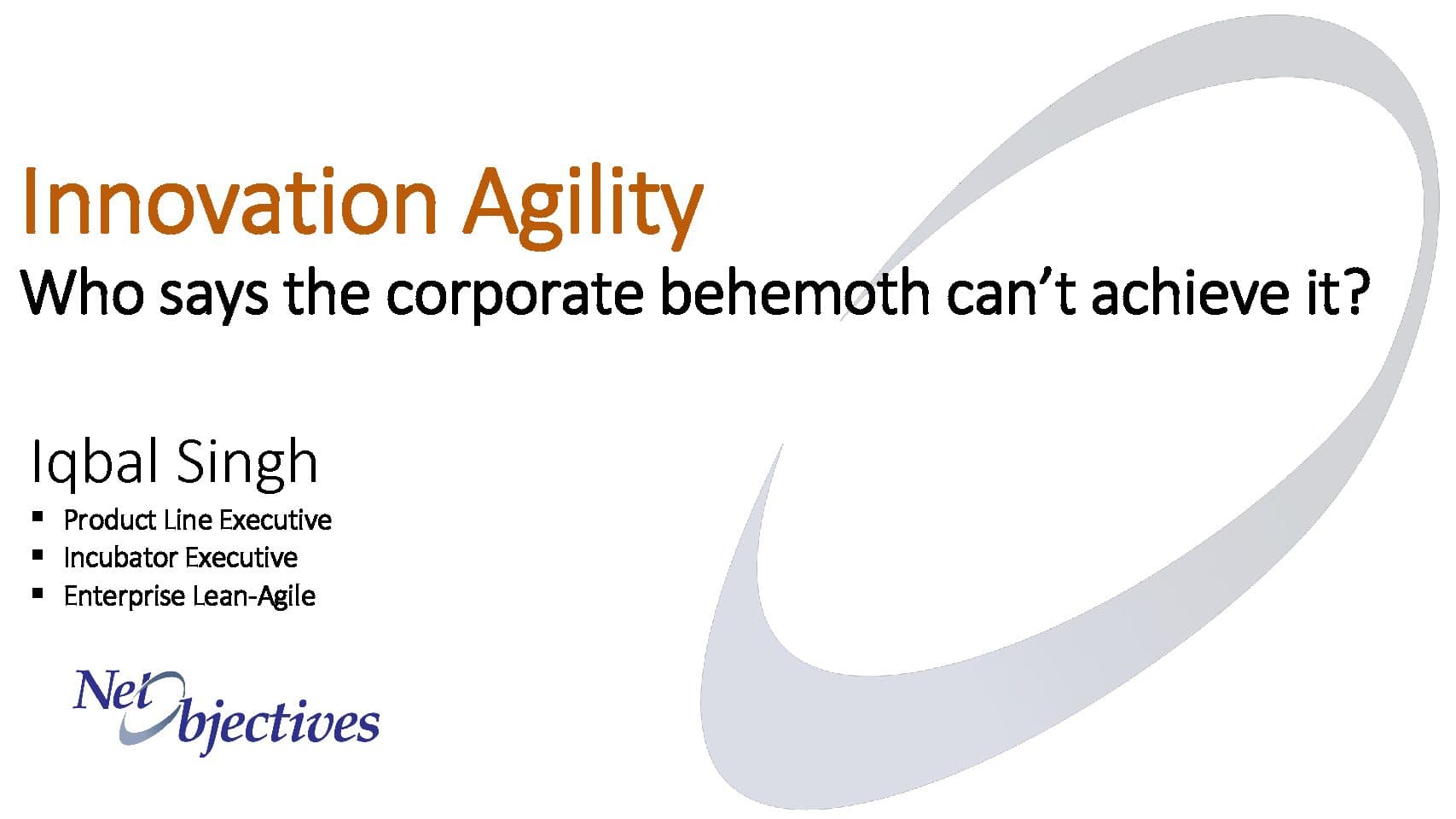Thank you very much. Innovation agility is the subject of my talk today. Andrea, Pat, and Jason, thanks for kicking off this segment. It’s been a great session. How’s the conference going for everybody? Great? Yeah?
I know I’m standing between you and lunch, so I won’t take too long. Let’s dive right into it.
What is Innovation Agility?
Innovation agility is an enterprise’s ability to thrive in a dynamic business environment by extending existing business models or creating new ones. It’s about continuously and rapidly developing an innovation pipeline to reinvent the business. You may have your own definition, adding or subtracting a few elements, but at its core, this is what innovation agility is about.
Why Does It Matter?
Remember the famous Kodak moment? Not really—it’s selfie time now. Kodak, once the fourth-largest company in the U.S., disappeared. This isn’t an isolated case. A study by Innosight last year found that the average tenure of an S&P 500 company has dropped by 40%, and it’s continuing to decline.
This is alarming. Enterprise survival requires continuous business innovation. Do leaders understand this? Most say they do. Another Innosight survey confirms that many leaders believe they can achieve innovation agility, but they must overcome significant impediments to get there.
A Real-World Innovation Agility Journey
I had the opportunity to work on an innovation agility journey at a large multi-billion-dollar company. We started small by setting up an incubator in Asia. We demonstrated success through small innovations and shared learnings across the enterprise. Over time, innovation agility became embedded in the company’s DNA.
Eventually, the company developed a three-horizon innovation pipeline to ensure they knew what they needed to do today, two years from now, and five years from now.
Key Impediments to Innovation Agility
1. Absence of an Entrepreneurial Culture
Peter Drucker famously said, "Culture eats strategy for breakfast." I agree. Alan Shalloway adds, "You can’t change the culture; you have to change the management system." I agree with that too.
Enterprise leaders need to take action. Culture doesn’t change overnight, and catchy slogans on the wall won’t do it. Real change happens when leadership demonstrates commitment through actions, not words.
What does it mean to cultivate an entrepreneurial culture? It means fostering intrapreneurs—people within the company who demonstrate entrepreneurial skills, take risks, embrace challenges, and drive change. Eric Ries, founder of Lean Startup, says, "Intrapreneurs are everywhere." That’s true, but not everyone is an intrapreneur. They are a special breed—individuals who embrace uncertainty, experiment, and take action.
Identifying intrapreneurs is not difficult. They aren’t hiding behind desks. They take initiative, seek challenges, and engage in meaningful work. You can also use tools like StrengthsFinder and MBTI to help identify them.
2. Lack of Engagement and Motivation
Traditional carrot-and-stick motivation doesn’t work—especially not for intrapreneurs. Daniel Pink highlights three key motivators: autonomy, mastery, and purpose.
- Autonomy: Give them the independence to direct their own work.
- Mastery: Encourage continuous learning and skill-building.
- Purpose: Align their work with meaningful goals.
One example I implemented was a "Just Do It" program—one full week, two or three times a year, where employees could work on anything they wanted. They simply had to share their idea and present results at the end. This led to tremendous engagement, creativity, and real innovations. Out of 50 team members, we implemented 10 new ideas into our product line in one year.
Purpose also matters. When John F. Kennedy announced the goal to put a man on the moon, it sparked massive innovation. Translating company initiatives into grand goals can have a similar impact.
3. Lack of Business Alignment
Technical experiments in isolation don’t work. Innovation must align with business strategy.
Our incubator was originally located in Asia. In hindsight, that was a mistake. The best place for an incubator is where the action is—near major customers, business units, and corporate strategy teams.
To bridge this gap, we adopted Lean Startup principles. We started every initiative with a business model, defined assumptions and hypotheses, and validated them through customer feedback and minimum viable products (MVPs). This build-measure-learn cycle enabled rapid learning and decision-making.
4. Misaligned Innovation Funding
Traditional big upfront funding commitments don’t work. Asking for ROI projections at the idea stage leads to Excel magic—crafting financial models just to get approval.
Instead, we moved to a staged funding model:
- Initial seed funding (5-10% of total estimated cost) to validate hypotheses.
- Quarterly funding reviews based on validated learning.
- Increased investment only after demonstrated progress.
This approach minimizes risk, lowers costs, and builds credibility with CFOs.
5. The "We’re Too Busy to Innovate" Excuse
Many companies say, "We have too many customers and too many products to maintain; we can’t innovate." But Henry Ford famously said, "If I had asked people what they wanted, they would have said faster horses."
In today’s world, businesses have a huge advantage—access to diverse and intelligent customer bases. Startups struggle to recruit customers, but larger enterprises can use customer insights to drive innovation.
A Real-Life Example
One project I personally led involved incubating a new product. Through continuous monitoring, we identified an emerging customer segment and a need for a big data platform.
- We secured initial seed funding from the CTO.
- We ran multiple alpha releases and used customers as design partners.
- Customer feedback led us to pivot—transforming it from a platform play to a product play.
- We integrated it with the existing portfolio and released it.
- The result: 30 Fortune 100 customers adopted it within six months.
Final Thoughts
- Don’t ignore the accelerating need for innovation agility.
- Don’t let culture eat your innovation strategy—empower intrapreneurs.
- Align innovation processes with Lean Startup methodologies.
- Fix funding models and innovation metrics.
- Develop a three-horizon innovation pipeline (short-term, mid-term, long-term).
Bottom line: Large corporations can achieve innovation agility. Keep the innovation wheel turning. Don’t let it stop.
Thank you! How did I do? Two minutes to spare.




